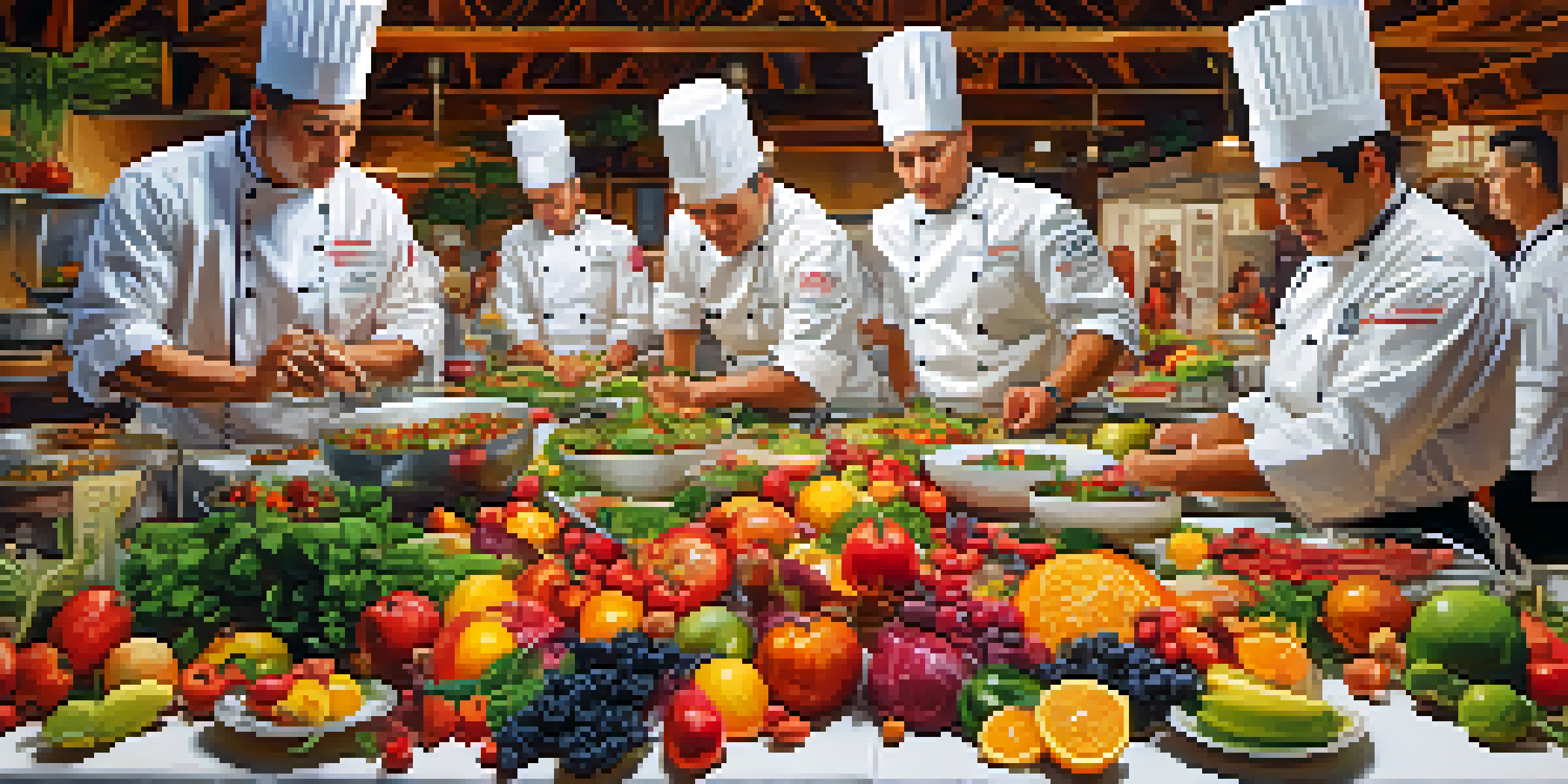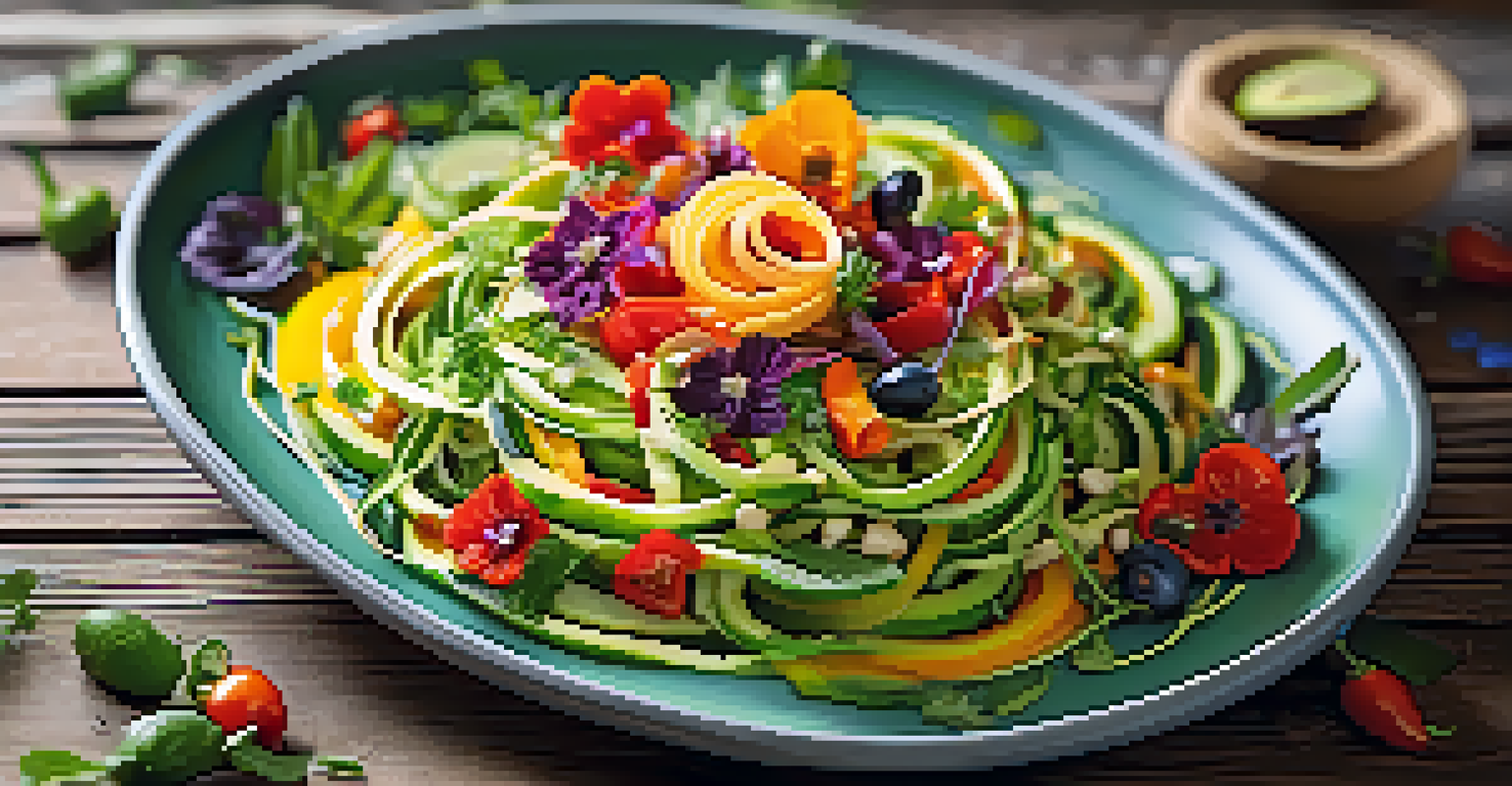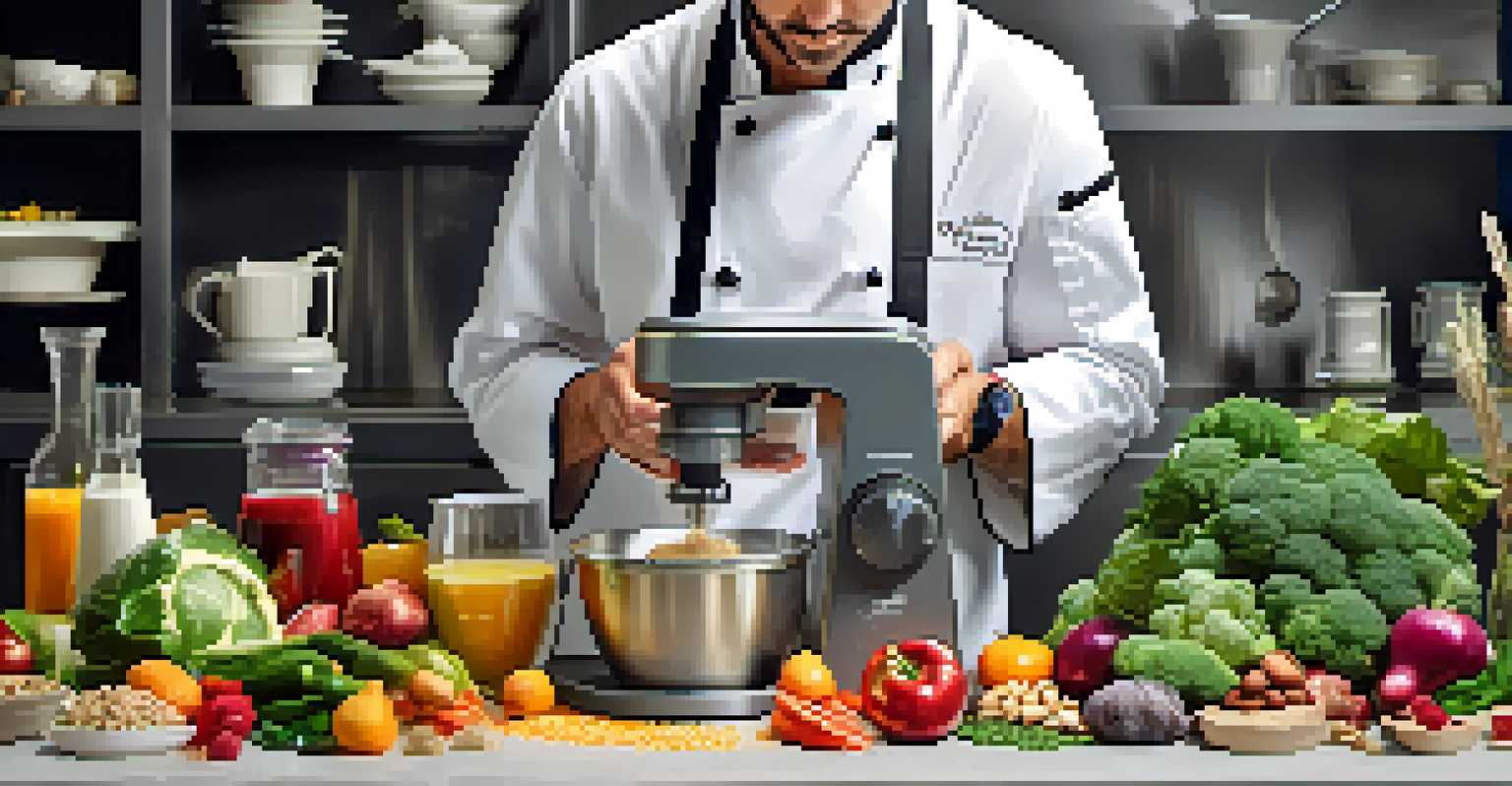Innovative Techniques Used in Raw Food Culinary Competitions

Understanding Raw Food Culinary Competitions
Raw food culinary competitions celebrate creativity and health by showcasing dishes made from uncooked ingredients. These events often highlight the vibrant flavors and textures of fruits, vegetables, nuts, and seeds, pushing chefs to think outside the box. Participants compete not just for taste but for aesthetics, presentation, and nutritional value, appealing to both the palate and the eye.
Cooking is like love. It should be entered into with abandon or not at all.
Competitions typically feature different rounds where chefs must whip up dishes within a time limit, using a select array of ingredients. This pressure cooker environment fosters innovation, as chefs must adapt and improvise on the spot. The excitement of competition fuels a sense of camaraderie among participants, who often share techniques and inspiration.
As the popularity of raw food grows, these competitions have become a platform for chefs to showcase their culinary skills while promoting health-conscious eating. They not only entertain but also educate audiences about the benefits of incorporating raw foods into their diets, paving the way for a more sustainable approach to eating.
Creative Plating Techniques in Raw Food
One of the most striking aspects of raw food competitions is the emphasis on creative plating. Chefs use unique shapes, colors, and arrangements to turn their dishes into visual masterpieces. Techniques such as stacking, layering, and using edible flowers often elevate a simple salad into a stunning centerpiece.

For instance, a dish might feature spiraled zucchini noodles topped with a vibrant, colorful sauce made from blended peppers and avocados. This not only makes it visually appealing but also showcases the natural colors of raw ingredients. The art of plating encourages chefs to express their personalities and culinary philosophies through their dishes.
Raw Food Competitions Inspire Creativity
These competitions encourage chefs to showcase their innovative culinary skills using uncooked ingredients while promoting health-conscious eating.
Moreover, innovative plating techniques engage the audience, making them eager to taste what they see. This focus on aesthetics not only enhances the dining experience but also challenges chefs to think creatively about how they present their food.
Incorporation of Technology in Raw Food Prep
Technology plays a significant role in the evolution of raw food culinary techniques. Many chefs are now using advanced tools like dehydrators, high-speed blenders, and spiralizers to enhance flavor and texture without cooking. These tools allow for the creation of dishes that mimic the taste and feel of traditional cooked meals.
Food is not just what we eat. It's an experience, a moment to cherish, and an opportunity to connect with nature.
For example, a dehydrator can transform fruits into chewy snacks or vegetables into crispy chips, adding depth to a raw dish. High-speed blenders enable chefs to create silky smooth sauces and soups that are rich in flavor, while spiralizers turn vegetables into noodles for a healthy pasta alternative.
These technological advancements not only streamline the preparation process but also open up a world of possibilities for flavor combinations and textures. As chefs embrace new tools, they continually push the boundaries of what can be achieved in raw food culinary competitions.
Fermentation Techniques in Raw Food Dishes
Fermentation has emerged as a popular technique in raw food competitions, adding depth and complexity to flavors. This ancient process involves the breakdown of sugars by microorganisms, resulting in tangy and probiotic-rich foods. Chefs are now experimenting with various fermented ingredients like kimchi, sauerkraut, and kombucha to enhance their raw dishes.
For instance, a raw taco dish might feature a fermented nut cheese, providing a creamy texture and a burst of flavor that complements fresh vegetables. Fermentation not only boosts the taste but also offers health benefits, promoting gut health and digestion, which resonates with health-conscious audiences.
Plating Transforms Raw Dishes
Creative plating techniques elevate raw food presentations, turning simple dishes into stunning visual experiences that engage the audience.
As competitors integrate fermentation into their dishes, they highlight the importance of traditional cooking methods while maintaining a raw approach. This fusion of techniques showcases the versatility of raw ingredients and invites diners to explore new culinary experiences.
Flavor Pairing Innovations in Raw Cooking
Innovative flavor pairings are at the heart of raw food culinary competitions, as chefs seek to surprise the palate. By combining unexpected ingredients, such as sweet fruits with savory herbs, competitors create unique and memorable dishes. This creativity reflects the chefs' understanding of flavor profiles and their willingness to experiment.
For example, a dish might feature watermelon cubes drizzled with a balsamic reduction and topped with fresh basil, offering a refreshing twist on traditional flavor combinations. This approach not only excites the taste buds but also encourages the audience to rethink their perceptions of raw food.
These daring flavor pairings challenge the notion that raw food is limited to salads and smoothies. Instead, they invite diners to explore a world of taste that is vibrant, diverse, and full of surprises, making raw food competitions an exciting culinary adventure.
Sustainability Practices in Raw Food Competitions
Sustainability is a critical theme in raw food culinary competitions, as chefs prioritize local and seasonal ingredients. By sourcing produce from nearby farms or urban gardens, competitors not only reduce their carbon footprint but also support their communities. This commitment to sustainability resonates with health-conscious and eco-aware diners alike.
For instance, a chef might create a dish using freshly picked vegetables from a local farm, emphasizing the importance of fresh, organic produce. This not only enhances flavor but also tells a story of connection between the food, the land, and the community.
Sustainability in Culinary Practices
Competitions emphasize the use of local and seasonal ingredients, fostering a connection between food, community, and environmental responsibility.
As sustainability becomes increasingly important in culinary practices, raw food competitions serve as a model for how chefs can create delicious dishes while being mindful of their environmental impact. This focus on ethical sourcing invites diners to appreciate the journey of their food from farm to table.
Judging Criteria in Raw Food Culinary Competitions
Judging criteria in raw food culinary competitions are multifaceted, focusing on taste, creativity, presentation, and nutritional value. Judges assess how well competitors balance these elements, ensuring they not only create flavorful dishes but also maintain the integrity of raw food principles. This comprehensive evaluation encourages chefs to think holistically about their culinary creations.
For example, a judge might score a dish higher not only for its taste but also for its innovative use of ingredients and presentation. This approach challenges chefs to push their creative boundaries while staying true to the raw food ethos.

As the competition unfolds, the judges' feedback often inspires participants to refine their techniques and concepts. This dynamic interaction fosters a vibrant learning environment where chefs continuously strive for excellence and innovation in their craft.